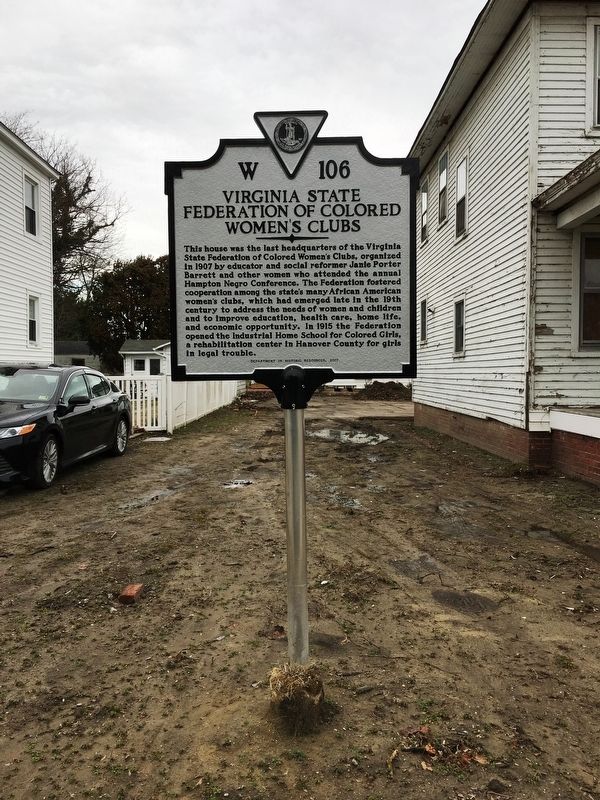By: Maria-Paula
Preservation Virginia has, in the National Historic Preservation Month, each May, since its launch more than 20 years ago, released a list of historic places across the Commonwealth facing imminent threats of being wiped off. This is to encourage individuals, organizations, and local and state government to advocate for and find solutions for their preservation.
The program, known for its success, has only listed 10% of sites highlighted as lost to either neglect or demolition.
“Historic places are at the forefront of debates about the environment, affordable housing, and smart growth. We need to work together to address these issues while preserving locations that still have so much to teach about our collective past and present. Once a historic place is demolished, it’s gone forever,” said Preservation Virginia CEO, Elizabeth S. Kostelny during a briefing.
This year’s program focuses on some of the most pressing issues affecting historic places in Virginia and the U.S. Such challenges include threats from harsh weather patterns including climate change, flooding and drought, inequality, industrial invasion, poor patriotism, and over population in building more housing to accommodate an increased in housing needs.
Partnerships from the state to federal levels to find collaborative solutions from encroachment into the unique historic sites is needed for the preservation of, not only in Virginia but the U.S.
African American Watermen Sites of the Chesapeake Bay is one of the most endangered historic areas in this year’s list. Watermen have been working and living in this bay since the 1600s. With a rich cultural and professional background, some enslaved and others free, they were the backbone of Chesapeake Bays seafood industry as they harvested and caught crabs, oysters, menhaden and clams for sale to white owned processing plants.
A survey and documentation of historic resources associated with the community identified many important sites including, marinas, boat building workshops, shucking houses and blacksmith stores. Some ancient watermen sites are still in good condition and operating although many are neglected and closed because of urbanization and migration into the big cities in a move by the locals to bridge the high economic gap.
Also, the rural, coastal locations of most watermen communities make them highly vulnerable to modern development. Harsh weather conditions like recurring floods and sea level rises puts many in danger with little or no protection.
The Last Headquarters of the Virginia Federation of Colored Women’s Clubs in Hampton is yet another listed thematic site of concern this year.
After purchase by the Barrett-Peake Heritage Foundation, the 1925 building served as the last headquarters of the Virginia Federation of Colored Women’s Clubs who attended the annual Hampton Negro Conference. Despite a partial facelift by the foundation, funding to complete the work at the center will go a long way in helping to educate the public about founder, educator and social reformer Janie Porter Barret and activities undertaken at the Virginia Federation of Colored Women’s Clubs.
Other listed spaces in the commonwealth of Virginia that need funding to preserve the Black community heritage include:
♦ Chapman Beverly Mill, an 18th to 19th century gristmill located in Prince William County’s Rural Crescent, which was badly destroyed by arsonists in 1998.
♦ Dwellings of the Enslaved, Statewide which embody the history of slavery, racism, and general oppression of the Blacks.
♦ The Town of Potomac Historic District in Alexandria, a suburban commuter locality of the early 20th century which has faced widespread demolitions in recent years to give room for new age construction.
♦ Willa Cather Birthplace in Frederick County. This is a 19th century log and frame house where the famous African American fiction writer and Pulitzer award-winner Willa Cather was born.
♦ Renowned High Schools in Virginia including Maury High School, Norfolk, Moore Street School and Thirteen Acres School both in Richmond, and Peabody-Williams School in Petersburg are listed among Historic endangered schools.
♦ Bristoe Station Battlefield Park, Western Prince William County is in danger due to large scale industrial development proposal in the area.
Putting emphasis to 170 endangered sites in Virginia alone, people of goodwill, organizations, as well as both local and state governments are encouraged to advocate and practice good stewardship for the sites preservation as solutions are sought to save these unique Historic locations for generations to come.
Virginia’s endangered sites includes several of Black heritage



